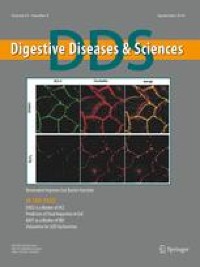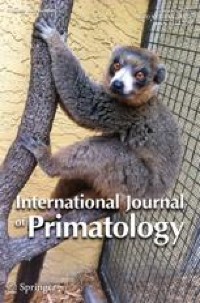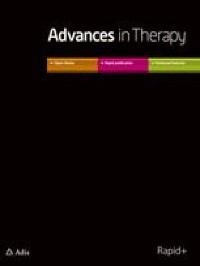|
Medicine by Alexandros G. Sfakianakis,Anapafseos 5 Agios Nikolaos 72100 Crete Greece,00302841026182,00306932607174,alsfakia@gmail.com,
Αρχειοθήκη ιστολογίου
-
►
2023
(272)
- ► Φεβρουαρίου (141)
- ► Ιανουαρίου (131)
-
►
2022
(2066)
- ► Δεκεμβρίου (80)
- ► Σεπτεμβρίου (170)
- ► Φεβρουαρίου (190)
- ► Ιανουαρίου (203)
-
▼
2021
(7399)
- ► Δεκεμβρίου (186)
- ► Σεπτεμβρίου (472)
- ► Φεβρουαρίου (851)
-
▼
Ιανουαρίου
(788)
-
▼
Ιαν 27
(50)
- The parameters of gait analysis related to ambulat...
- Self-efficacy beliefs mediate the association betw...
- Cancer cell-intrinsic STING is associated with CD8...
- Effects of a high-volume static stretching program...
- Deep venous thrombosis and abortion: an unusual cl...
- Simultaneous Examination of Eosinophil Infiltratio...
- Sleep Patterns of Aging Chimpanzees ( Pan troglody...
- Sulodexide for Diabetic-Induced Disabilities: A Sy...
- Functional properties of insect olfactory receptor...
- Identification of CXCL11 as part of chemokine netw...
- Aloin antagonizes stimulated ischemia/reperfusion-...
- Exploring the Factors that Influence Workforce Par...
- Predicting behavioral competencies automatically f...
- Successful introduction of robotic-assisted percut...
- VIP modulates human macrophages phenotype via FPRL...
- Human Multi-Robot Physical Interaction: a Distribu...
- Ultrasound evaluation of the rotator interval and ...
- Low-dose antiplatelet therapy survey after intrace...
- PI3K/AKT signaling drives titanium-induced angioge...
- Development of epimedin A complex drugs for treati...
- Natural killer cells associated with SARS-CoV-2 vi...
- Effects of rifampicin on the pharmacokinetics of a...
- Variance-dependent neural activity in an unvolunta...
- Phasic pupillary responses modulate object-based a...
- Typicality modulates attentional capture by object...
- Modulation of early auditory processing by visual ...
- The Circular Stapled Esophagogastric Anastomosis i...
- System Xc − : a key regulatory target of ferroptos...
- Surgical management of anomalous origin of coronar...
- Perfusion-weighted techniques in MRI grading of pe...
- Hyperhomocysteinemia is a risk factor for postoper...
- Paraneoplastic neuromyelitis optica spectrum disor...
- Population Pharmacokinetics of Docetaxel, Paclitax...
- Can the Japanese National Clinical Database risk c...
- Efficacy of three-dimensional computed tomography ...
- Prostate Multiparametric MRI: Common Pitfalls in P...
- Diffusion-weighted imaging for predicting tumor co...
- Automatic Segmentation of Temporal Bone Structures...
- An electromagnetic tracking implantation navigatio...
- Research on Spatial Motion Safety Constraints and ...
- Development of a novel deployable arm for natural ...
- Fluorescence‐guided D3 lymphadenectomy in robotic ...
- Master manipulator optimisation for robot assisted...
- Urological and sexual function after robotic and l...
- Acceptance of patients towards task‐autonomous rob...
- End‐user evaluation of software‐generated interven...
- easyEndo robotic endoscopy system: Development and...
- A deep learning network‐assisted bladder tumour re...
- Robotic enucleation for oesophageal benign and bor...
- Eye Explorer: A robotic endoscope holder for eye s...
-
▼
Ιαν 27
(50)
-
►
2020
(2517)
- ► Δεκεμβρίου (792)
- ► Σεπτεμβρίου (21)
- ► Φεβρουαρίου (28)
-
►
2019
(12076)
- ► Δεκεμβρίου (19)
- ► Σεπτεμβρίου (54)
- ► Φεβρουαρίου (4765)
- ► Ιανουαρίου (5155)
-
►
2018
(3144)
- ► Δεκεμβρίου (3144)
Ετικέτες
Πληροφορίες
Τετάρτη 27 Ιανουαρίου 2021
The parameters of gait analysis related to ambulatory and balance functions in hemiplegic stroke patients: a gait analysis study
Self-efficacy beliefs mediate the association between pain intensity and pain interference in acute/subacute whiplash-associated disorders
|
Cancer cell-intrinsic STING is associated with CD8 + T-cell infiltration and might serve as a potential immunotherapeutic target in hepatocellular carcinoma
|
Effects of a high-volume static stretching programme on plantar-flexor muscle strength and architecture
|
Deep venous thrombosis and abortion: an unusual clinical manifestation of severe form of pectus excavatum
|
Simultaneous Examination of Eosinophil Infiltration in Esophageal Mucosa and Muscle in Patients with Achalasia: Direct Biopsy of the Esophageal Muscle at Per-oral Endoscopic Myotomy
|
Sleep Patterns of Aging Chimpanzees ( Pan troglodytes )
|
Sulodexide for Diabetic-Induced Disabilities: A Systematic Review and Meta-Analysis
|
Functional properties of insect olfactory receptors: ionotropic receptors and odorant receptors
|
Identification of CXCL11 as part of chemokine network controlling skeletal muscle development
|
Aloin antagonizes stimulated ischemia/reperfusion-induced damage and inflammatory response in cardiomyocytes by activating the Nrf2/HO-1 defense pathway
|
Αναζήτηση αυτού του ιστολογίου
! # Ola via Alexandros G.Sfakianakis on Inoreader
-
Does CBD Oil Lower Blood Pressure? This article was originally published at SundayScaries." Madeline Taylor POSTED ON January 13, 20...
-
Abstract Purpose Clinicians must balance the risks from hypotension with the potential adverse effects of vasopressors. Experts have rec...








